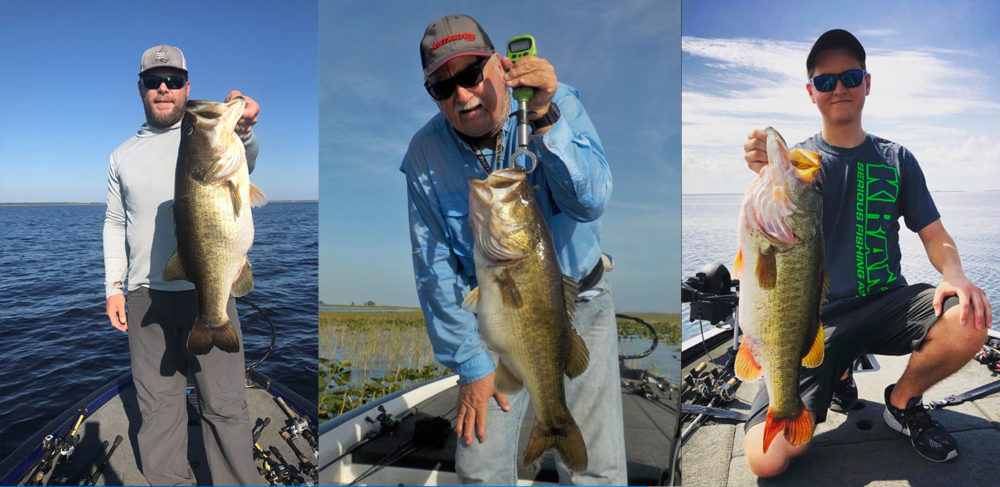DID YOU KNOW: Why the Kissimmee Chain is Such a Big-Fish Powerhouse

KISSIMMEE, Fla. – The lakes of the Kissimmee Chain of Lakes in central Florida – site of the inaugural event in the Major League Fishing Bass Pro Tour – are rightfully regarded as some of the most prolific trophy-largemouth bass fisheries in the world.
Just ask MLF pro Dean Rojas, whose 45-pound, 2-pounce limit caught on Lake Toho in 2001 still stands as the heaviest one-day weight ever caught in a five-fish-limit event. Or MLF pro Luke Clausen, who caught a then-record 29-6 on Day 1 of the 2006 Bassmaster Classic en route to his wire-to-wire win in that event.
But tournament numbers don’t even begin to do the Kissimmee Chain justice.

According to the latest database for Florida’s TrophyCatch program – the Florida Fish & Wildlife Conservations Commission’s (FWC) “citizen-science” angler recognition program in which anglers photograph, release and document trophy-size largemouth – the fisheries on which the MLF Bass Pro Tour will be contested Jan. 29-Feb. 3 have produced a mind-blowing 1,143 largemouth weighing 8 pounds or more in the past five years alone: 761 on Lake Kissimmee, 308 on Lake Toho, 47 on Cypress Lake and 27 on Lake Hatchineha.
“These fisheries have been phenomenal forever,” says MLF pro Bobby Lane, who has racked up six of his 10 tour-level wins to date on the Kissimmee Chain. “I think anglers have become more adapted to how to catch some of the bigger fish, but these lakes are as great as they are because of conservation, lake management, and programs like the TrophyCatch program. People are releasing these big fish, and it’s really helped the lakes generate big fish.”
The strength of sound biology
Catch-and-release programs aside, you can thank Mother Nature for the Kissimmee Chain’s abundance of 8-plus-pound fish. Start with Florida’s feeding/growing season, which occurs the entire year, allowing largemouth in the Chain to feed at will on shad, bluegill, shell-crackers, minnows, shiners, and various other baitfish.
“We have year-around growth with our fish because we live in a subtropical environment,” said FWC biologist Marty Mann, who has helped manage the Kissimmee Chain for 20 years. “We have real fertile water bodies with lots of food. There’s all kinds of different forage that do well with the right kinds of both emergent and submerged plants that exist in these lakes. It’s an ongoing battle with water management, but overall, Florida has worked really hard over the last 40 years to maintain quality habitat for our fisheries. I think it shows.”
Timing is everything
The MLF Bass Pro Tour’s arrival in Kissimmee in late January will likely coincide with skittish weather patterns, but in the yearly fishing calendar, the six-day competition window will provide plenty of opportunity for big fish.
“It’s hard to get those big fish to bite on Kissimmee when it’s cold, but even if that’s the case, Toho has enough hydrilla that we’ll still catch the heck out of them, even with a cold front,” Lane said. “If it gets warm and all of those lakes are fishing right, we’ll see multiple fish over 8 pounds. We’ve never seen an event on these lakes under the MLF format, but I’m telling you, if somebody lands on the right spot and those lakes are fishing, we’ll see some things that will absolutely blow your minds.”